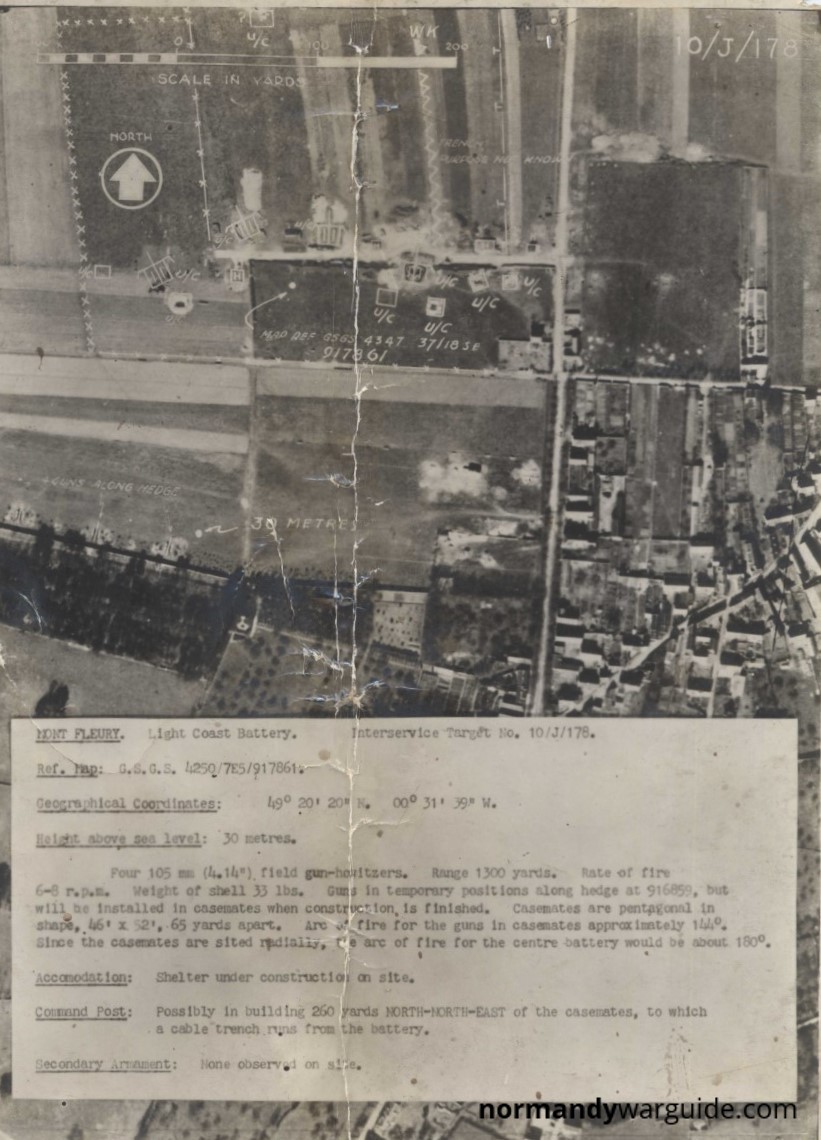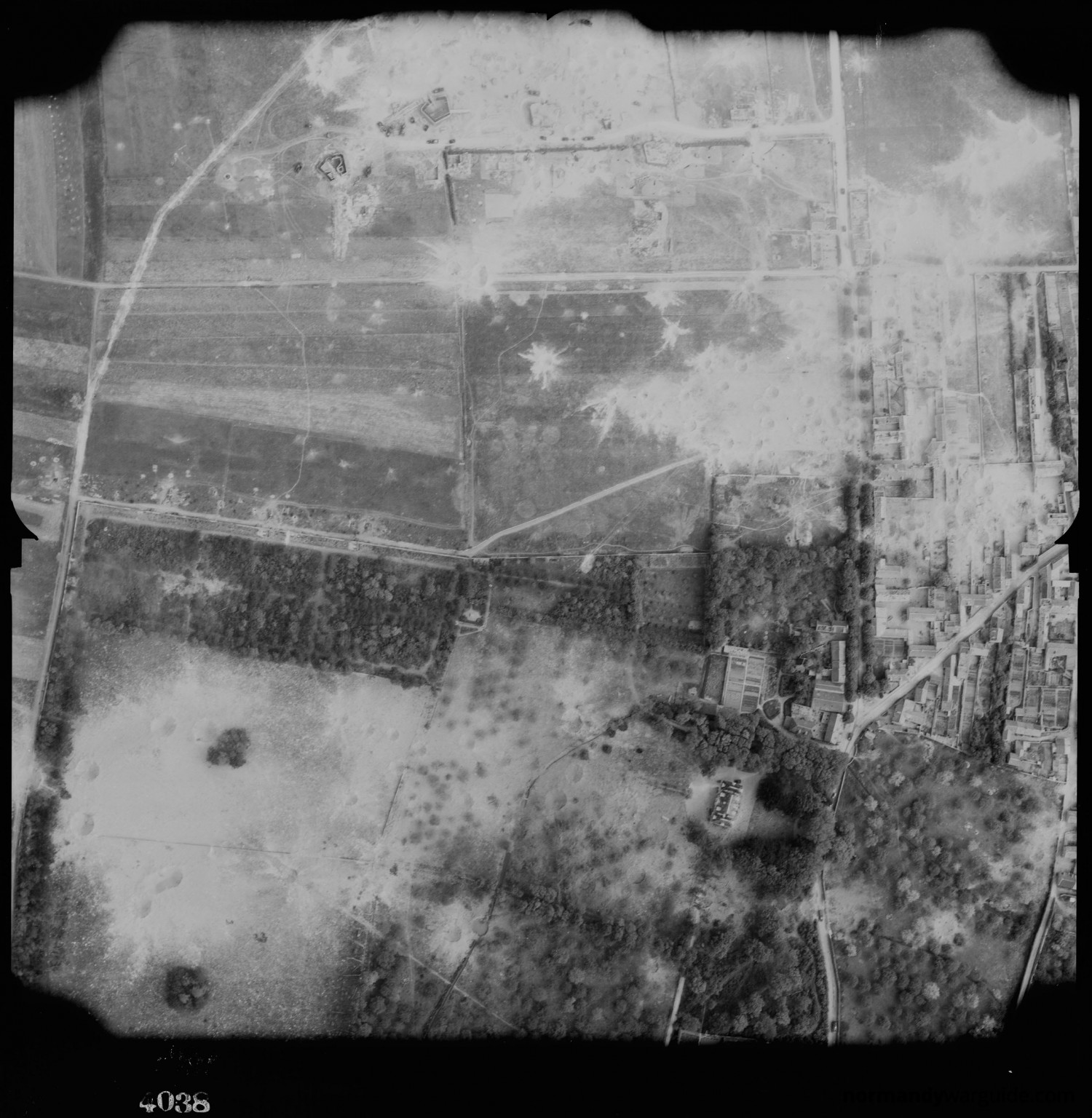Mont Fleury Battery
Mont Fleury Battery also known as Roquettes Battery is located near the village of Mont Fleury just North of Ver-sur-Mer, 800 meters inland from Gold Beach and was still under construction when the Allies landed on D-Day.
The battery had four 122mm Russian Guns although some of these were positioned out in the open as their casemates had not yet been completed.
“Four 105mm (4.14”) field gun-howitzers. Range 1300 yards. Rate of fire 6-8 rpm. Weight of shell 22 lbs. Guns in temporary positions along the hedge at 916859, but will be installed in casemates when construction is finished. Casemates are pentagonal in shape, 46’ x 52’, 65 yards apart. Arc of fire for the guns in casemates approximately 144°. Since the casemates are sited radially, the arc of fire for the centre battery would be about 180°.“

The battery was targetted by bombers on the morning of the 6th June 1944 which was followed up by a Naval bombardment from the British cruisers HMS Orion and HMS Belfast.
The damage caused by the bombing can be seen in the image below which was taken on D-Day.

The 6th Green Howards War Diary entry from 7:30am on DDay
“A and D Coys being the fwd Coys, assaulted the beach between Map Refs 910869 and 918868 A Coy attacked the highly fortified strongpoint at 914868 and D Coy attacked the heavily concreted gun positions in area MONT FLEURY Map Ref 917863, The storming of both these enemy positions was highly successful and the Bn: suffered surprisingly low casualties.”
Our archive contains the map referenced in the diary Creully - 7E/5
The battery was captured on the morning of D-Day by D Company of the 6th Green Howards. It was during this CSM Stanley Hollis performed his first act of heroism that day which lead to him being awarded the only VC from DDay for storming two Pillboxes with a grenade and Sten Gun capturing many prisoners.
Help to improve this listing
Found an error with this listing or know something we don't? report it here!
Location
| Longitude: | -0.528573 |
|---|---|
| Latitude: | 49.33844 |
Nearby

Musee America - Gold Beach
0.19 miles awayThe Gold Beach Museum (Musée America – Gold Beach) covers the German defences along the beach prior to D-Day aswell as D-Day and the intelligence operations behind it with a particular focus on the 50th Northumberland division and the creation of RAF airfields in the area.
Read more
Ver sur Mer Warship Anchor
0.19 miles awayAn anchor belonging to one of the warships that fought during the Normandy invasion.
Read more
Train Stop dedicated to Stanley Hollis
0.47 miles awayA light train stop dedicated to the memory of CSM Stanley Hollis VC and the men of the 6th and 7th Battalions of the Green Howards (Alexandra, Princess of Wales's Own Yorkshire Regiment).
Read more



